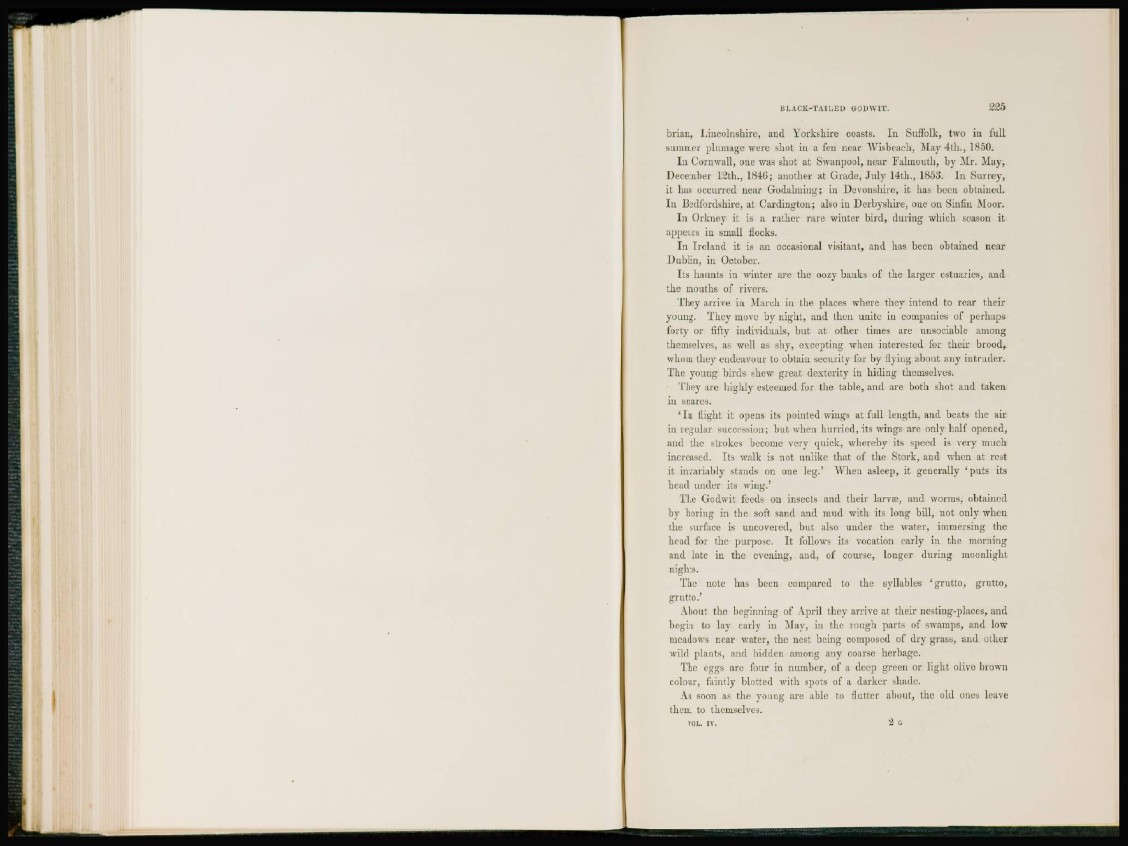
brian, Lincolnshire, and Yorkshire coasts. In Suffolk, two in full
summer plumage were shot in a fen near Wisbeach, May 4th., 1850.
I n Cornwall, one was shot at Swanpool, near Falmouth, by Mr. May,
December 12th., 1846; another at Grade, J u l y 14th., 1853. In Surrey,
it has occurred near Godalmiiig; in Devonshire, it has been obtained.
I n Bedfordshire, at Cardington; also in Derbyshire, one on Sinfin Moor.
I n Orkney it is a rather rare winter bird, during which season it
appears in small flocks.
I n Ireland it is an occasional visitant, and has been obtained near
Dublin, in October.
Its haunts in winter are the oozy banks of the larger estuaries, and
the mouths of rivers.
They arrive in March in the places where they intend to rear their
young. They move by night, and then unite in companies of perhaps
forty or fifty individuals, but at other times are unsociable among
themselves, as well as shy, excepting when interested for their brood,
whom, they endeavour to obtain security for by flying about any intruder.
The young birds shew great dexterity in hiding themselves.
They are highly esteemed for the table, and are both shot and taken
in snares.
' I n flight it opens its pointed wings at full length, and beats the air
in regular succession; but when hurried, its wings are only half opened,
and the strokes become very quick, whereby its speed is very much
increased. Its walk is not unlike that of the Stork, and when at rest
it invariably stands on one leg.' When asleep, it generaUy 'puts its
head under its wing.'
The Godwit feeds on insects and their larvae, and worms, obtained
by boring in the soft sand and mud with its long bill, not only when
the surface is uncovered, but also under the water, immersing the
head for the purpose. It follows its vocation early in the morning
and late in the evening, and, of course, longer during moonlight
nights.
The note has been compared to the syllables ' g r u t t o , grutto,
grutto.'
About the beginning of April they arrive at their nesting-places, and
begin to lay early in May, in the rough parts of swamps, and low
meadows near water, the nest being composed of dry grass, and other
wild plants, and hidden among any coarse herbage.
The eggs are four in number, of a deep green or light olive brown
colour, faintly blotted with spots of a darker shade.
As soon as the young are able to flutter about, the old ones leave
them to themselves.
VOL. IV. 2 Ci